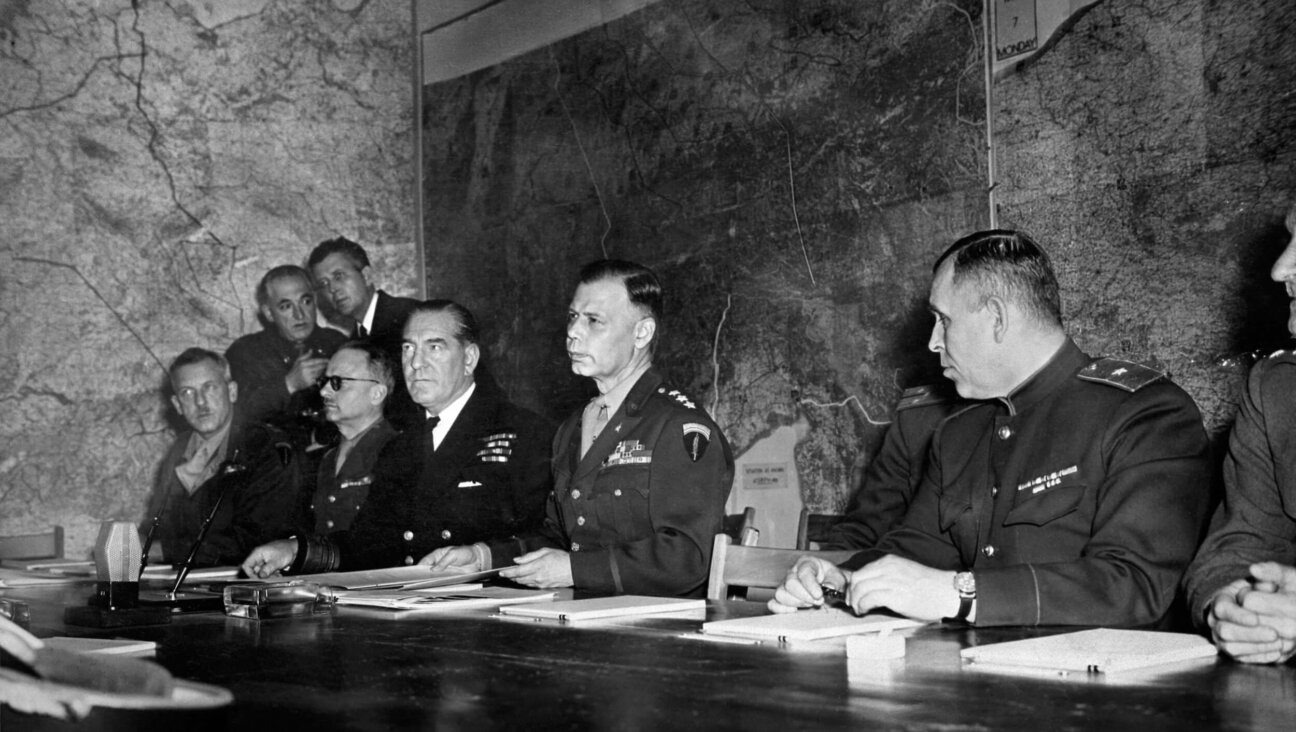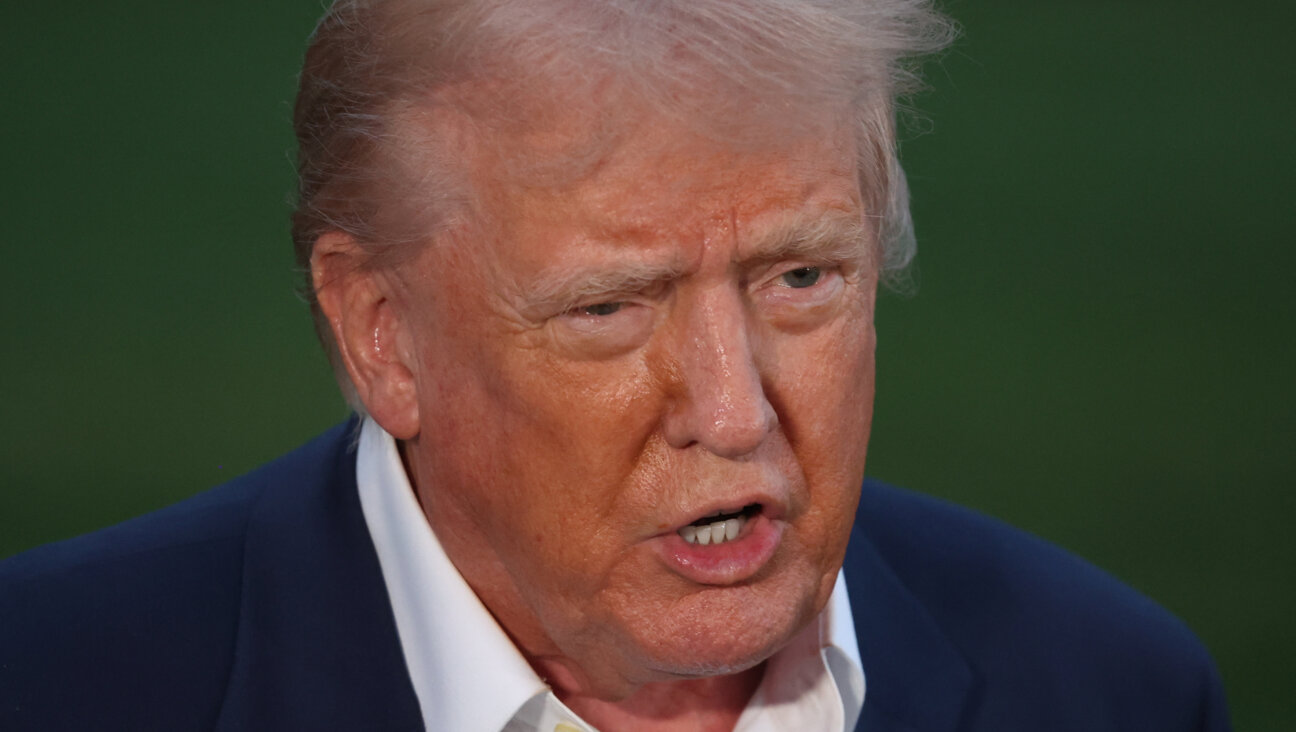Pressure Russia To Reveal Looted Art’s Heritage
Vladimir Putin, it seems, has finally gotten serious about stolen artworks. The theft reported last month of millions of dollars worth of objects from the Hermitage, the famed museum in St. Petersburg, has led to a frenzy of activity to inventory the artworks in Russia’s museums. On Putin’s order, the government set up an audit commission last week to look into how the 221 items were stolen and whether other of the Hermitage’s more than 2.5 million objects are missing.
While they are at it, the Russian government should make good on its nearly decade-old pledge to identify Nazi-looted art. For years, Russia’s efforts at identifying these artworks in its custody have been contemptible.
Artworks of sentimental, artistic and financial value were among the massive assets confiscated from European Jews by the Nazis, their collaborators and opportunists. Many of those works are believed to have been taken to the Soviet Union immediately after World War II. These cultural properties often are dubbed “twice stolen” — they were first looted by the Nazis, and then captured from the Germans by Soviet troops who viewed them as a form of war reparations.
Russia has cooperated, at least in theory, with the ongoing efforts to recover art looted from Jews by the Nazis. Among the most startling news from the 1998 Washington Conference on Holocaust-Era Assets was Russia’s agreement, without serious arm-twisting, to allow Nazi victims to claim artworks that ended up in Russia and to open its archives to researchers. That was reaffirmed at an international conference in 2000 in Vilnius.
But while Russia had agreed to open its archives, it was short of cash. Stuart Eizenstat, then the Clinton administration’s point man on restitution, announced that Edgar Bronfman and Ronald Lauder would provide $500,000 for a project to help organize a special register of displaced art and identify prewar owners through research in Russian archives. That project became known as “Heritage Revealed.”
Before it terminated its efforts last November, it produced reports on cultural properties from Hungary, Breslau and Austria, as well as a book on the return to Russia of the remaining archives of the Communist Party of Smolensk. That archive had been seized by the Nazis, and much had been recovered by the Red Army. However, some 500 files were located by American authorities in Germany and were not returned until December 2002.
Russia appeared to take the issue seriously, and some Russian officials involved with the Bronfman- and Lauder-sponsored project showed a clear sympathy for the efforts to identify Nazi-looted art. “During World War II, these works of art suffered severe trials, many of them witnesses of ruined individual and family fortunes, of the tragic fate of nations,” Mikhail Shvydkoi wrote in a “Heritage Revealed” catalog. Shortly thereafter, however, he was toppled from his post as culture minister.
And there is a restitution law on the books in Russia, but it illuminates the government’s ambivalence, if not hostility, toward identifying and returning Nazi-looted art. The law has some rather unsavory features, including charging successful claimants for storage and appraisal fees.
However, the biggest flaw in the process is that no one really knows what Russia has — and until the artworks are made public, it is impossible to begin provenance research and initiate claims.
“Heritage Revealed” was unable to produce a register. Russia’s Culture Ministry made an effort, inaugurating a Web site listing displaced art, including objects that had disappeared from Soviet institutions during the Nazi occupation. In March 2003, the site posted images of some 10,000 items, and the Culture Ministry said it planned to post 500,000 by 2005. But the Web site quickly vanished from the Internet. Observers said that when Nazi victims, originally from Breslau, recognized artworks and filed claims, Moscow realized that if you post it, they will come. The easiest way to protect Russia from restitution claims was to simply stop publishing holdings online.
Even when the site was functioning, it was of limited value. It was in Russian, lacked a decent search function, and some preeminent institutions were not among the original participants. There were no paintings from the Hermitage or, for that matter, from Moscow’s State Historical Museum, which is generally believed to have a significant amount of trophy art.
Six years have passed since the last international governmental conference on looted cultural properties, and last year the last small source of outside pressure on Russia ceased with the closure of “Heritage Revealed.” Now, however, Putin has a humiliating incentive to inventory artworks.
The State Department and victims’ advocates should impress upon the Russian president that it behooves him to abide by his international commitment to attempt to identify works that might have belonged to Nazi victims and that are eligible for restitution under Russian law.
No one expects Putin to provide quick or extensive provenance research. The artworks, after all, migrated during the war. But that does not mean the Russian government has nothing to go on. When Soviet troops brought home one particular Old Master from Berlin, for example, they did not stop to consider that the painting may have been stolen by the Nazis in 1940 from a Jewish dealer in Amsterdam. Indicating that the work was looted, as one German diplomat has noted, might involve little more than posting the date it came into Russian possession: “Acquired in 1945. It’s a good clue.”
Marilyn Henry, a contributing editor at ARTnews magazine, is author of the forthcoming “Confronting the Perpetrators: A History of the Claims Conference” (Vallentine Mitchell).
The Forward is free to read, but it isn’t free to produce

I hope you appreciated this article. Before you go, I’d like to ask you to please support the Forward.
Now more than ever, American Jews need independent news they can trust, with reporting driven by truth, not ideology. We serve you, not any ideological agenda.
At a time when other newsrooms are closing or cutting back, the Forward has removed its paywall and invested additional resources to report on the ground from Israel and around the U.S. on the impact of the war, rising antisemitism and polarized discourse.
This is a great time to support independent Jewish journalism you rely on. Make a gift today!
— Rachel Fishman Feddersen, Publisher and CEO
Support our mission to tell the Jewish story fully and fairly.
Most Popular
- 1

Culture Cardinals are Catholic, not Jewish — so why do they all wear yarmulkes?
- 2

Fast Forward Ye debuts ‘Heil Hitler’ music video that includes a sample of a Hitler speech
- 3

News School Israel trip turns ‘terrifying’ for LA students attacked by Israeli teens
- 4

Fast Forward Student suspended for ‘F— the Jews’ video defends himself on antisemitic podcast
In Case You Missed It
-

Yiddish קאָנצערט לכּבֿוד דעם ייִדישן שרײַבער און רעדאַקטאָר באָריס סאַנדלערConcert honoring Yiddish writer and editor Boris Sandler
דער בעל־שׂימחה האָט יאָרן לאַנג געדינט ווי דער רעדאַקטאָר פֿונעם ייִדישן פֿאָרווערטס.
-

Fast Forward Trump’s new pick for surgeon general blames the Nazis for pesticides on our food
-

Fast Forward Jewish feud over Trump escalates with open letter in The New York Times
-

Fast Forward First American pope, Leo XIV, studied under a leader in Jewish-Catholic relations
-
Shop the Forward Store
100% of profits support our journalism
Republish This Story
Please read before republishing
We’re happy to make this story available to republish for free, unless it originated with JTA, Haaretz or another publication (as indicated on the article) and as long as you follow our guidelines.
You must comply with the following:
- Credit the Forward
- Retain our pixel
- Preserve our canonical link in Google search
- Add a noindex tag in Google search
See our full guidelines for more information, and this guide for detail about canonical URLs.
To republish, copy the HTML by clicking on the yellow button to the right; it includes our tracking pixel, all paragraph styles and hyperlinks, the author byline and credit to the Forward. It does not include images; to avoid copyright violations, you must add them manually, following our guidelines. Please email us at [email protected], subject line “republish,” with any questions or to let us know what stories you’re picking up.















